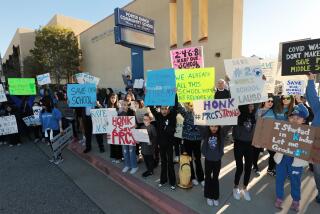LAUSD does its homework
After extensive study, the Los Angeles Unified School District last year unveiled a new draft homework policy that looked like the product of some very badly done homework indeed.
Flexible in the wrong ways, inflexible in the wrong ways, self-contradictory and at times simply muddled, it would have mandated that homework count for no more than 10% of a student’s grade — meaning that it would make very little difference even if a student blew off half of it. At the same time, it failed to set appropriate amounts of homework based on students’ ages and grade levels. It never differentiated between routine, daily homework and, say, final papers for a class, and assumed in alarming ways that disadvantaged and minority students were less capable of doing homework than others.
Fortunately, Supt. John Deasy quickly axed the draft, which had been initiated by his predecessor, and started again. The new draft policy could hardly be more different in its approach, comprehensiveness and overall sanity.
It allows homework to count for up to 20% of a student’s grade, a far more reasonable number, and sets limits on how much daily homework can be assigned. In elementary school, homework could increase by 10 minutes per year, the standard now in place at many public schools; in other words, a second-grader could not be assigned to do more than 20 minutes per day, a third-grader 30 minutes, and so forth. Slightly steeper increases would be allowed in middle and high schools.
The policy makes an important distinction between routine homework and long-term assignments such as research papers, which would be exempt from the limits and could count toward a higher percentage of the overall grade. Papers and projects are valuable assignments that prepare students for more advanced work, and the diminishment of their importance under the previous draft was unacceptable.
The new policy also would allow individual schools to vary from the districtwide rules as long as teachers and parents were involved in the decision to do so. This makes good on Deasy’s vow that under his administration, schools will be given the flexibility to do what works for their particular mission and their particular students.
The draft is now being reviewed at community meetings with parents; it could be amended before the board considers it in April. But any changes should be in the form of small refinements rather than an overhaul of the proposed policy, which district administrators got right this time.
More to Read
A cure for the common opinion
Get thought-provoking perspectives with our weekly newsletter.
You may occasionally receive promotional content from the Los Angeles Times.






